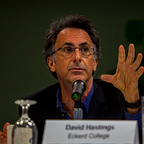Dr. David Hastings Reveals Impact of Microplastic Particles Found in Tampa Bay Waters
Dr. David Hastings recently retired from Eckerd College, reveals the impact of billions of microplastic particles recently identified in Tampa Bay, Florida.
Four billion microplastic particles were estimated to exist in Florida’s Tampa Bay late last year. A marine science expert, Professor David Hastings, provides insight into the impact of such particles, both in the Tampa Bay estuary and in other aquatic and marine environments.
“Approximately four billion microplastic particles were found in Tampa Bay waters,” says Dr. David Hastings, speaking from his home in Gainesville, Florida. “In addition, we estimated that there are three trillion pieces in surface sediments of Tampa Bay”.
Retired marine science professor David Hastings from Eckerd College led regular research cruises in Tampa Bay for two decades. During the routine collection of plankton and water samples, he and his students began to see small pieces of plastic appearing in addition to the natural living plankton normally found in estuaries.
As a result, Dr. David Hastings led a study that would indicate the true scale of microplastic contamination in Tampa Bay. This was the first-ever estimate of the abundance and distribution of microplastic particles in Tampa Bay.
The impact of billions of pieces of microplastics is potentially harmful to marine organisms according to Professor David Hastings. Because microplastics are similar in size to living plankton, filter feeders — such as clams, shrimp and oysters — plus numerous fish species and birds are now ingesting these particles, not recognizing them as synthetic plastic, David Hastings reports. “From here, they are then able to enter the food chain,” says the retired professor.
What’s more, persistent pollutants — including toxic pesticides, industrial chemicals, and heavy metals — can stick to the surfaces of microplastics, making ingestion even more harmful to these organisms, with effects including reproductive disruption, cellular damage and death.
“While we use single-use plastic bags and bottles for less than an hour, these plastics remain in our oceans for more than a lifetime after they are discarded,” points out retired professor David Hastings. He and other marine science experts suggest that only by removing the source of these single-use plastics can the impact of microplastics in the marine environment be minimized.
In his study, marine scientist David Hastings and the team of students from Eckerd College and the University of South Florida found four pieces of microplastic per gallon of water during collection. Extrapolating these findings to include the entire Tampa Bay estuary, they estimated that approximately four billion microplastic particles exist in Tampa Bay waters.
It is hoped, said Dr. David Hastings, that this research, which was completed late last year, will bring greater calls for action — and influence future policy makers’ decisions — regarding local and state legislation related to single-use plastics and marine conservation in Tampa Bay and beyond.
Dr. David Hastings recently retired from Eckerd College, is a marine geochemist and chemical oceanographer. Dr. David Hastings landed on the shores of Tampa Bay, Florida, in 2000 to teach marine science, environmental science, and chemistry at Eckerd College. Dr. David Hastings believes in the importance of scientists actively engaging in policy conversations. — with the public, and with elected officials — and the imperative of taking action in Florida to mitigate the worst impacts.
